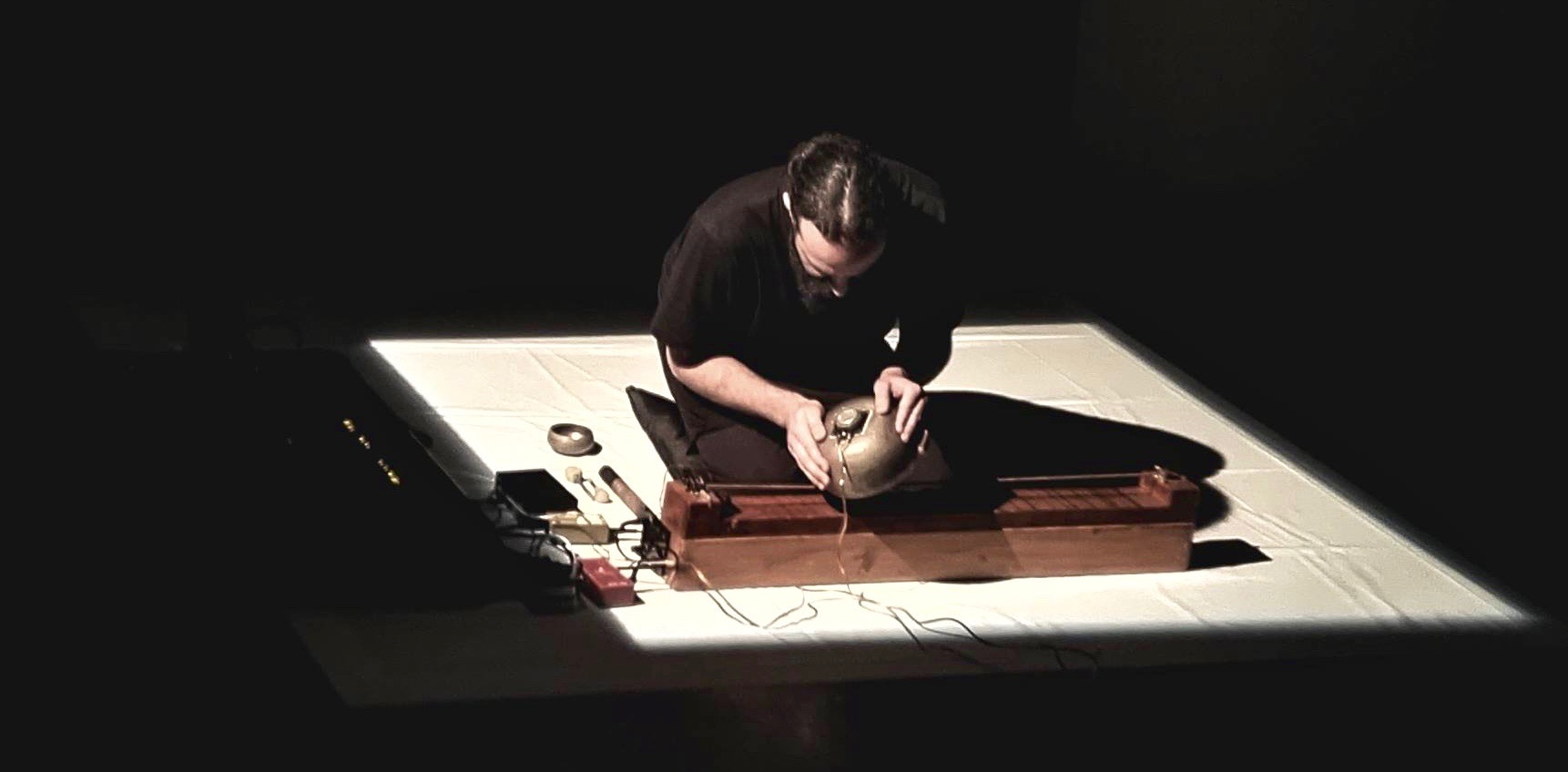Massimiliano Cerioni (Italy, 1986) is an audiovisual composer, sound-art performer, sound designer and a native of Pomezia (Rome), currently living in Amsterdam. He writes electroacoustic music, sound-art and intermedia performances, audiovisual installations, music for dance, theatre and short movies.
He also leads independent research projects about music and technology.
He also leads independent research projects about music and technology.

His style focuses on primordial sound topoi, to be considered as evolving organisms that connect each other in a complex acoustic texture, building-up a listening experience that has been described as immersive, reflective whereas engaging. This cinematic vision naturally flows into intermedia works such as audiovisuals and performances, in which gestures belonging to different semantic fields generate brand new perceptual events known as synchresis (Michel Chion 1990-1994).
With Michelangelo Lupone he graduated in electronic music from the A. Casella conservatory of music in L’Aquila. He has provided technical and artistic support for important societies and institutions from Italy and France (Agorà Srl, CRM, INA-GRM, GMEM). In 2014 he performed at the ICMC in Athens. In 2015 he placed 1st at the Italian national art prize Premio Abbado – category “electroacoustic music composition”. In 2014 and 2016 he received artistic commissions by the CRM – Centro Ricerche Musicali of Rome for writing two pieces for dance. He developed collective projects with several professionals: Andrea Alessi (filmmaker), Niels “Storm” Robitzky (breaker), Valerio De Vita (choreographer), Nicoletta Horochowski (engineer), SaraBrown (performer), Maurizio Palpacelli (sound designer and luthier) and Manifesto Delle Visioni Parallele (artistic production collective).
Cerioni plays didgeridoo and custom-made instruments such as Metastring, a meta-instrument that first appeared in September 2017 at Tempo Reale in Florence, Italy. Metastring is an expanded electroacoustic monochord, which combines the piano string features with the electric transduction of sound, the diversified playing modes of the percussions and the live-electronics processing of the signal. Metastring tends towards the polyphony in spite of its monophonic mechanics, and promotes an instrumental approach that is oriented to a stratified view of the sound; according to that, the quartet made-up by: “exciter-vibrating body-transducer-processor” actually becomes an organic acoustic source.
